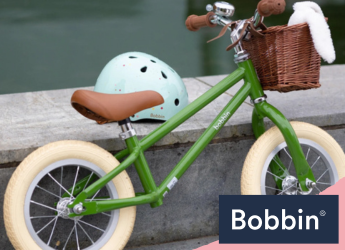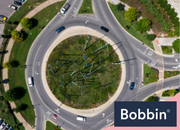Are Balance Bikes Safe? Toddler Cycling Safety Guide
Balance bikes are unlike any other bicycles for kids. They’re two-wheeled, pedal-free vehicles designed for toddlers and children learning to balance before transitioning to bikes with pedals. They are perfectly safe for helping children learn to ride, as long as the correct safety measures are followed. Here’s a quick guide to help your child stay safe while enjoying riding and make the experience enjoyable.
Methods for Learning to Ride a Balance Bike
Children learning to ride a bike begins with parents guiding them through the process. The approach, though, can be a bit different for a toddler balance bike. There are four stages your little rider may go through, and your support can mean a lot through each phase.
Starting with the first stage, ‘stand and walk’, which is often the longest phase of learning. You may see your child standing over their Bobbin balance bike and walking with it. They might not even try to sit on it, simply just walking it around. Let them explore at their own pace during this phase. This can help reduce the risk of falls, as they are less likely to push themselves beyond their current abilities.
Next is the ‘sit and walk’ stage, where your child will eventually learn to sit on the bike. Once they’re comfortable with sitting and moving, they can advance to the ‘sit and run’ and finally to the ‘sit, run, and glide’ stage. Refer to our guide, ‘Teach Your Kid How to Ride a Balance Bike’, for detailed guidelines.
Safe Places for Learning to Ride Bikes
If your garden or outdoor space is limited, there are ideal locations where you can teach your little rider these stages. Residential streets that are safe for cycling can allow your children to run and glide without incoming cars interrupting their training.
The wide paths and sidewalks of local parks also make them an excellent training spot. Toddlers can enjoy the smooth, even surfaces, and parents can join in on your next family bike ride!
Another option is school car parks, which can be spacious enough even for teenagers to ride freely. Be sure to visit during weekends and holidays, as they tend to be vacant during these times. Of course, this is only if the car park is not gated off.
Teach Basic Road Rules
Children are no exception to learning the road rules, and it’s the parent’s duty to ensure they are well aware of their surroundings. Consider the following basic traffic rules below:
- Keep toddlers off busy roads and encourage them to stay on the pavement or designated paths for cycling.
- Teach them to stop and look both ways before crossing driveways or streets. Be sure to stay on their side or guide them while you’re at the back for this one.
- Understanding basic traffic signals like stop signs and traffic lights is important, even on a balance bike.
Read our guide, ‘The Cycling Rules Children Need to Learn,’ for more tips and information.
Children’s Cycling Safety Equipment
Even in the early stage of learning, your child must wear a well-fitting toddler helmet. To measure, focus on your little one’s head circumference by wrapping a tape measure about an inch above their eyebrows. If you’re buying online, the manufacturer should have their kids’ helmet sizes range listed.
In addition to helmets, make sure they wear knee and elbow pads for added protection in case of a fall. This can prevent scrapes, bruises, and fractures, as well as boost their confidence, knowing they won’t get hurt.
For their balance bike, adding a bike bell enhances their road presence. Children can ring them ding-dong to alert their fellow cyclists and other road users that they’re coming. If the training extends after the sun sets, bike lights are key to increasing their visibility. These bike accessories also add flair and character to their two wheels.
We hope these tips give you ideas on how to train your child to ride a balance bike with safety in mind. For more, check out this guide: How to Teach a Kid to Ride a Bike in 5 Minutes: Easy Steps!










